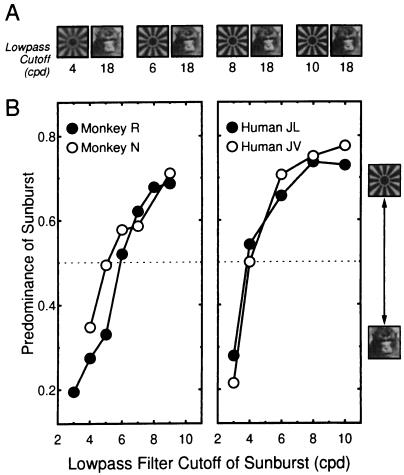Figure 2.
Behavioral verification of monkey’s performance during rivalry. (A) Each pair of images depicts a stimulus condition, wherein the image of the face remained unchanged while that of the sunburst was blurred, to various degrees, by lowpass filtering. Filtering was achieved by multiplying the amplitudes of forward Fourier transformed images by an exponential gain and then converting back to the space domain. The lowpass cutoffs shown below each image refer to the frequency at which the exponential filter was equal to 1/e. (B) Predominance of a stimulus as function of spatial frequency bandwidth. Predominance is defined here as Tsunburst/(Tsunburst + Tface), where Tsunburst and Tface are the time durations for which the sunburst and the face were exclusively visible. (Left) Data from monkeys and (Right) data from experimentally naive human subjects. Note that predominance is systematically related to the spatial frequency content of the sunburst pattern for both monkeys and humans; as the sunburst is blurred to greater extents, it is perceived dominant for a decreasing proportion of time.

